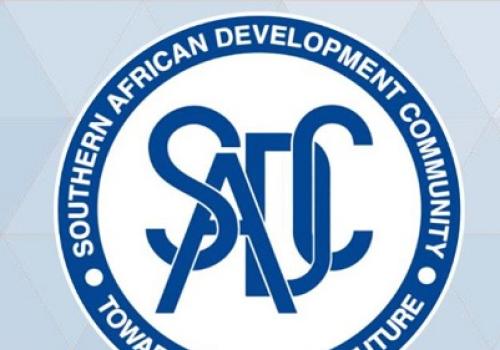The SADC Regional Vulnerability Committee Chair, António Pacheco Dias Lima on 22 February, 2021 called on member states, to find ways to share success stories, opportunities and progress captured in national Vulnerability Assessment and Analysis to inform food security interventions as the region battles COVID-19 and record high levels of food insecurity
Dias Lima was speaking from the Mozambique capital, Maputo, during the SADC - Regional Vulnerability Assessment and Analysis Programme (RVAA) Annual Organisational Meeting convened virtually under the chairship of Mozambique. It is the first time the AOM has been convened virtually due to the global COVID-19 pandemic restrictions and associated public health concerns.
The AOM aims to provide National and regional Vulnerability Assessment Committees (NVACs), and International Cooperating Partners (ICPs) an opportunity to reflect on the work they have done and collaboratively find solutions to challenges and advance good practices among Vulnerability Assessment and Analysis (VAA) practitioners in the region.
51.3 million people in both urban and rural areas of Southern Africa are food insecure
NVACs traditionally conduct annual, once-off face to face (F2F) assessments that inform projections six months ahead. Due to COVID 19 challenges countries adjusted their assessment approaches to mostly remote monitoring in lieu of field assessments. Mobile data collection and use of very high-resolution satellite imagery for “hotspot mapping” were some of the innovative techniques NVACs adopted to ascertain food insecurity.
Last December the Vulnerability Assessment and Analysis (VAA) dissemination forum issued an updated Synthesis Report which integrates COVID-19 into all sectoral analyses. The report projects a rise from 41million (2019/20) to 51.3 million food insecure people in both urban and rural areas of Southern Africa. The highest number ever recorded by the SADC RVAA Programme. This figure is likely to rise with the extended impacts of COVID-19.
NVAC data is important to governments and partners - humanitarian and development actions to prevent, prepare for and respond to food insecurity crises. In Madagascar, NVAC data formed the basis of a January 2021 Flash Appeal, while in Zimbabwe NVAC’s 2019/20 VAA results were the basis of the December 2020 Situation Report issued by the UN Office for the Coordination of Humanitarian Affairs (OCHA). In 2019, Angola, Botswana, Lesotho, Namibia and Zimbabwe declared states of disaster based on NVAC analysis of drought impacts.
“The wealth of data that the RVAA has generated over the years forms a good basis for some of the discussions and engagements in the food systems conversations such as the UN Food systems summit” said Andrew Odero – WFP’s Head of Vulnerability Assessment and Mapping for Southern Africa and Indian Ocean States speaking during the virtual meeting.
Odero urged participants to find ways of strengthening the use and uptake of RVAA products and knowledge assets to support decision-making and influencing policy in the midst of multiple challenges such as climate change induced impacts of recurrent drought, floods and increased cyclonic activities and increasing extreme poverty driven by COVID-19.
The meeting emphasised on the development of plans that include a quality assurance mechanism to ensure the quality of VAA data so that it becomes credible and is able to influence policy and programmes in the countries.
SADC Member States Governments were urged to incorporate VACs into government structures. Delegates from the 16 SADC countries that included National Vulnerability Assessment Committees (NVACs), the Regional Vulnerability Assessment Committee (RVAC) and International Cooperating Partners (ICPs) all joined the virtual event.
Contact:
Barbara Lopi, Head of Communications and Public Relations, SADC Secretariat, Email: blopi@sadc.int
Caroline HUNGWE: Communication and Policy Advocacy Adviser. Gaborone. Botswana. Email: caroline.hungwe@wfp.org
About SADC
SADC is an organization of 16 Member States established in 1980. The Mission of SADC is to promote sustainable and equitable economic growth and socio-economic development through efficient, productive systems, deeper cooperation, and integration, good governance, and durable peace and security; so that the region emerges as a competitive and effective player in international relations and the world economy.
The SADC Regional Vulnerability Assessment and Analysis (RVAA) Programme was established in 2005 to support Member States (MS) monitor the attainment capacity of rural communities to overcome food and nutrition insecurity in the face of pervasive poverty, low economic growth and climate change. The RVAA Programme seeks to provide timely credible vulnerability information at; the same time strengthen capacities to meet the ever-increasing information needs of governments and partners for developmental programming and emergency response.
Vulnerability Assessment and Analysis (VAA) is the regional monitoring system applied by the National Vulnerability Assessment Committees (NVACs) established in 14 SADC Member States.

